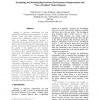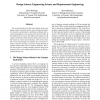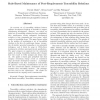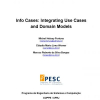RE
2008
Springer
13 years 11 months ago
2008
Springer
Scalability is widely recognized as an important software quality, but it is a quality that historically has lacked a consistent and systematic treatment. To address this problem,...
RE
2008
Springer
13 years 11 months ago
2008
Springer
U.S. laws and regulations are designed to support broad societal goals, such as accessibility, privacy and safety. To demonstrate that a product complies with these goals, busines...
RE
2008
Springer
13 years 11 months ago
2008
Springer
Missing or imprecise requirements can lead stakeholders to make incorrect assumptions. A "Not a Problem" defect report (NaP) describes a software behavior that a stakeho...
RE
2008
Springer
13 years 11 months ago
2008
Springer
For several decades there has been a debate in the computing sciences about the relative roles of design and empirical research, and about the contribution of design and research ...
RE
2008
Springer
13 years 11 months ago
2008
Springer
An accurate set of traceability relations between software development artifacts is desirable to support evolutionary development. However, even where an initial set of traceabili...
RE
2008
Springer
13 years 11 months ago
2008
Springer
We describe the experience of using a combination of requirements engineering techniques (scenarios, storyboards, observation and workshops) in an escience application to develop ...
RE
2008
Springer
13 years 11 months ago
2008
Springer
RE
2008
Springer
13 years 11 months ago
2008
Springer
In order to make requirements comprehensible to humans and as unambiguous as possible, a glossary and/or domain model is needed for defining the terminology used. Unless these are...
RE
2008
Springer
13 years 11 months ago
2008
Springer
In early phases of the software cycle, requirements prioritization necessarily relies on the specified requirements and on predictions of benefit and cost of individual requiremen...
RE
2008
Springer
13 years 11 months ago
2008
Springer




